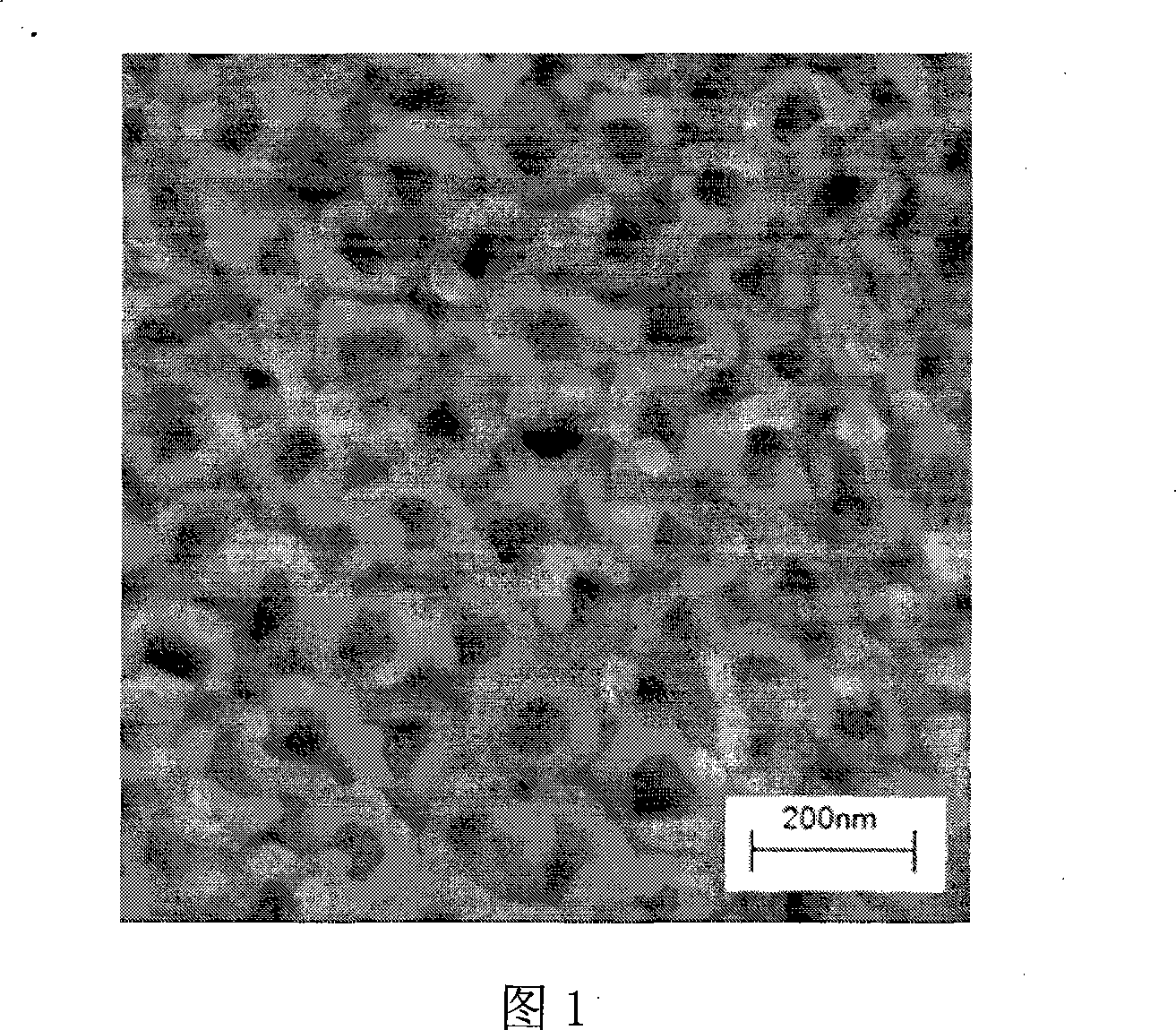Method for in-situ preparation of PbTiO3 nano-tube array film by using hydrothermal process
A nanotube array and in-situ preparation technology is applied in the field of in-situ preparation of PbTiO3 nanotube array films by hydrothermal method, and can solve the problem that the nanotube array films are not suitable for the preparation of nanotube array films, alkaline mineralizers are unfavorable to grow nanotube array films, etc. problems, to achieve the effect of suitable for large-scale production, controllable conditions, and low energy consumption
- Summary
- Abstract
- Description
- Claims
- Application Information
AI Technical Summary
Problems solved by technology
Method used
Image
Examples
Embodiment 1
[0027] 1. Polish the titanium foil with 400 mesh, 600 mesh, 800 mesh, 1000 mesh and 1200 mesh SiC sandpaper respectively, and then use 0.05μm Al 2 o 3 Polish to mirror brightness, put the polished titanium foil into acetone and deionized water for 10 minutes and ultrasonically clean it, and dry it for later use;
[0028] 2. Add 12 milliliters of phosphoric acid to 136 milliliters of deionized water, and mix evenly under magnetic stirring to prepare a 1 mol / liter phosphoric acid solution, then add 25 milliliters of hydrofluoric acid to the above phosphoric acid solution, and continue stirring under magnetic force and mix evenly, and be prepared into a water-based electrolyte containing 5% hydrofluoric acid by mass percent;
[0029] 3. At room temperature, put the pretreated titanium foil and platinum sheet into a 5% water-based electrolyte, anodize for 0.5 hours under a constant voltage of 25 volts, and anodize The final titanium foil was washed with deionized water and then ...
Embodiment 2
[0033] 1. Polish the titanium foil with 400 mesh, 600 mesh, 800 mesh, 1000 mesh and 1200 mesh SiC sandpaper respectively, and then use 0.05μm Al 2 o 3 Polish to mirror brightness, put the polished titanium foil into acetone and deionized water for 10 minutes and ultrasonically clean it, and dry it for later use;
[0034] 2. Add 6 milliliters of phosphoric acid to 136 milliliters of deionized water, and mix evenly under magnetic stirring to prepare a 0.5 mol / liter phosphoric acid solution, then add 2.5 milliliters of hydrofluoric acid to the above phosphoric acid solution, and continue stirring under magnetic force and mix evenly, and prepare a water-based electrolyte solution containing 1% hydrofluoric acid by mass.
[0035] 3. At room temperature, put the pretreated titanium foil and platinum sheet into a two-electrode system in a 1% water-based electrolyte, and perform anodic oxidation at a constant voltage of 25 volts for 5 hours, and the anodic oxidation The final titani...
PUM
 Login to View More
Login to View More Abstract
Description
Claims
Application Information
 Login to View More
Login to View More - R&D
- Intellectual Property
- Life Sciences
- Materials
- Tech Scout
- Unparalleled Data Quality
- Higher Quality Content
- 60% Fewer Hallucinations
Browse by: Latest US Patents, China's latest patents, Technical Efficacy Thesaurus, Application Domain, Technology Topic, Popular Technical Reports.
© 2025 PatSnap. All rights reserved.Legal|Privacy policy|Modern Slavery Act Transparency Statement|Sitemap|About US| Contact US: help@patsnap.com

